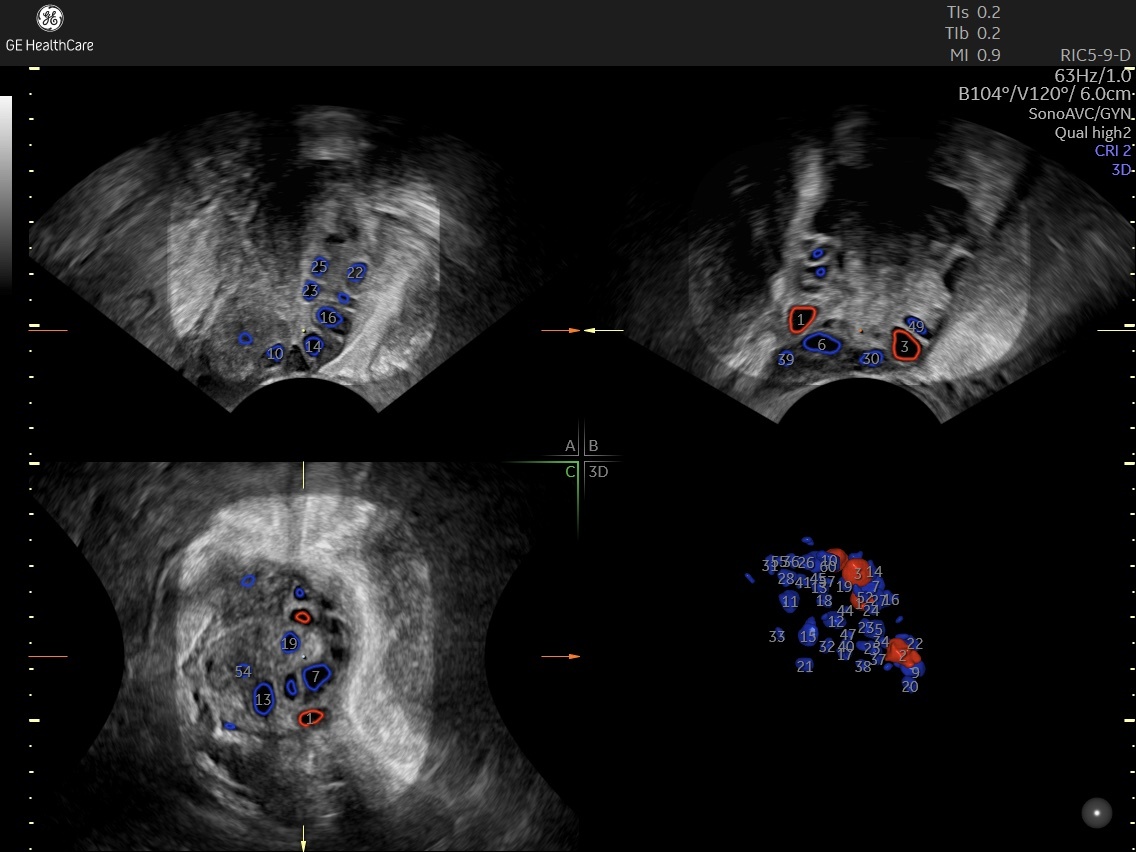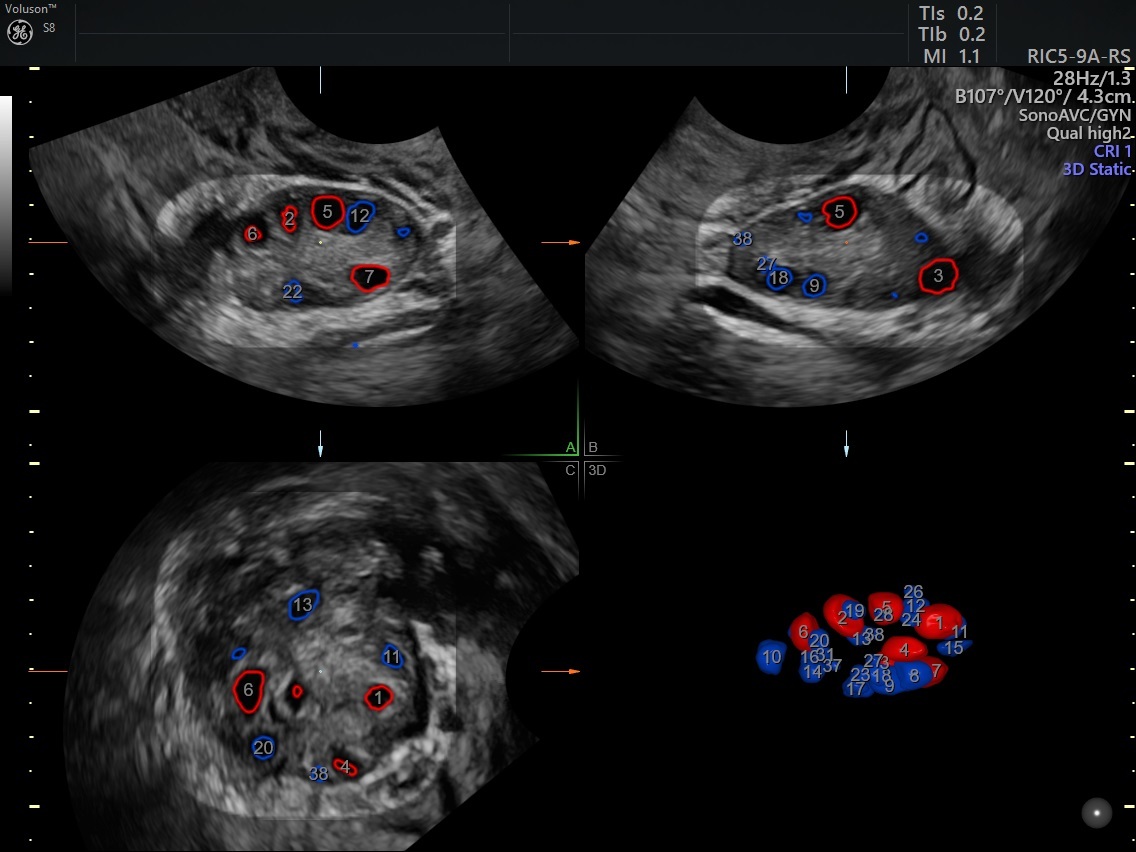At some point during infertility treatment planning, clinicians will need to assess a patient's antral follicle count (AFC). When compared with testing for anti‐Müllerian hormone, taking the AFC offers advantages in several scenarios, research published in Ultrasound in Obstetrics and Gynaecology reports. These include sizing up ovarian reserve and viewing the structural health of the ovaries, fallopian tubes and uterus.
Diagnostic tools such as ultrasound that count and measure follicles both quickly and accurately can help to ensure a more effective, comfortable experience for patients undergoing fertility testing and treatment.
Why Might a Reproductive Specialist Take an Antral Follicle Count?
Prestimulation AFCs are indicated to assess ovarian reserve in patients over 35 who have not conceived after six months of trying and who have risk factors for diminished ovarian reserve. Such risk factors may include prior cancer treatments such as radiation or the use of gonadotoxic medications. Patients with endometriosis who have undergone ovarian surgery may also require AFC assessment.

Though providers can perform an AFC at any point during the menstrual cycle, they often prefer to count antral follicles early in the patient's cycle — around cycle day two to five — to avoid the risk of a cyst or corpus luteum obscuring follicles. Taking an AFC early in the cycle can help clinicians more accurately assess readying follicles to predict response to ovarian stimulation, although the stimulation treatment plan would not likely change even if the count is performed later in the cycle. For that reason, and because patients may feel more comfortable waiting until after menstruation stops for the month, later antral counts are acceptable.
Imaging Equipment for Antral Follicle Count
For the best outcomes, a consensus opinion published in Ultrasound in Obstetrics and Gynecology recommends practitioners include follicles between 2 and 10 mm in the count, as they have the highest sensitivity to follicle-stimulating hormone (FSH). The opinion recommends that clinicians measure AFC using transvaginal ultrasound with a minimum frequency of 7 MHz and with contrast configurations arranged so that the operator can differentiate between ovarian stroma and follicular fluid. At a minimum, the authors suggest, operators need to take 20 to 40 supervised patient scans to learn how to take proper measurements.
As far as which modality is optimal — 2D versus 3D — the researchers suggest it depends on equipment availability and operator training: 3D machines require more experienced technicians, who have exceeded the 20 to 40 exam minimum. However, 3D ultrasound has the benefit of better image quality (thanks to inversion mode), volume contrast and automated volume calculation.
Visual and Timing Advantages of Automation-Enabled 3D Ultrasound
Historically, one challenge of manually counting follicles with ultrasound during pretreatment evaluation has been that of accurately and quickly measuring antral follicles when they are small and plentiful. Automation plays a critical role in diagnostic efficacy and speed; it can be instrumental in laying the groundwork for an effective IVF treatment plan.
For example, the Voluson SonoAVC™antral can automatically identify, count and color-code unstimulated follicles of predefined size ranges with each scan. This often removes the need for clinicians to manually count follicles at all.

Automate ovarian reserve assessment in 3D using SonoAVC™antral2.0
Many providers prefer automation to the time-intensive process of freezing images, making notations and measuring follicles one by one. Automated antral follicle counts are especially ideal for patients with high follicular volumes (more than 20 antral follicles in each ovary), such as patients with polycystic ovarian syndrome (PCOS).
Three-Step Protocol for Measuring AFC
When using 3D ultrasound to assess AFC, the Ultrasound in Obstetrics and Gynecology study suggests this simplified exam protocol:
- Expand the image to see the entire ovary, leaving out as much extraovarian tissue as possible.
- Run the automated analysis to view the display of antral follicles.
- If the analysis overreports or underreports visible follicles, the operator can manually adjust the count by clicking on the identified structures individually.

SonoAVC™ antral2.0 automatically counts antral follicles helping increase efficiency and consistency in determining ovarian reserve.
In other words, the operator simply scans, views and makes manual adjustments if necessary. Within seconds, they get more insight into the best fertilization strategy. Incorporating this technology into your practice can streamline the process of counting and selecting follicles and improve your patient's chances for a successful IVF cycle.




